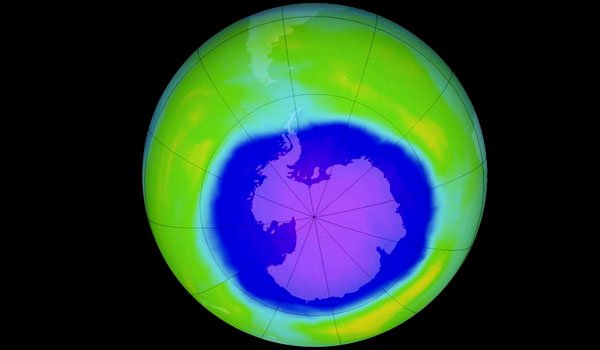The scientists said that in September 2015 the hole was around 4 million sq km smaller than it was in the year 2000 - an area roughly the size of India.
The gains have been credited to the long term phasing out of ozone-destroying chemicals.
The study also sheds new light on the role of volcanoes in making the problem worse.
Skin cancer worry
British scientists first noticed a dramatic thinning of ozone in the stratosphere some 10 kilometres above Antarctica in the mid 1980s.
Ozone is important because it blocks out harmful ultraviolet radiation from the Sun.
Its absence increases the chances of skin cancer, cataract damage, and harm to animals and plants.






